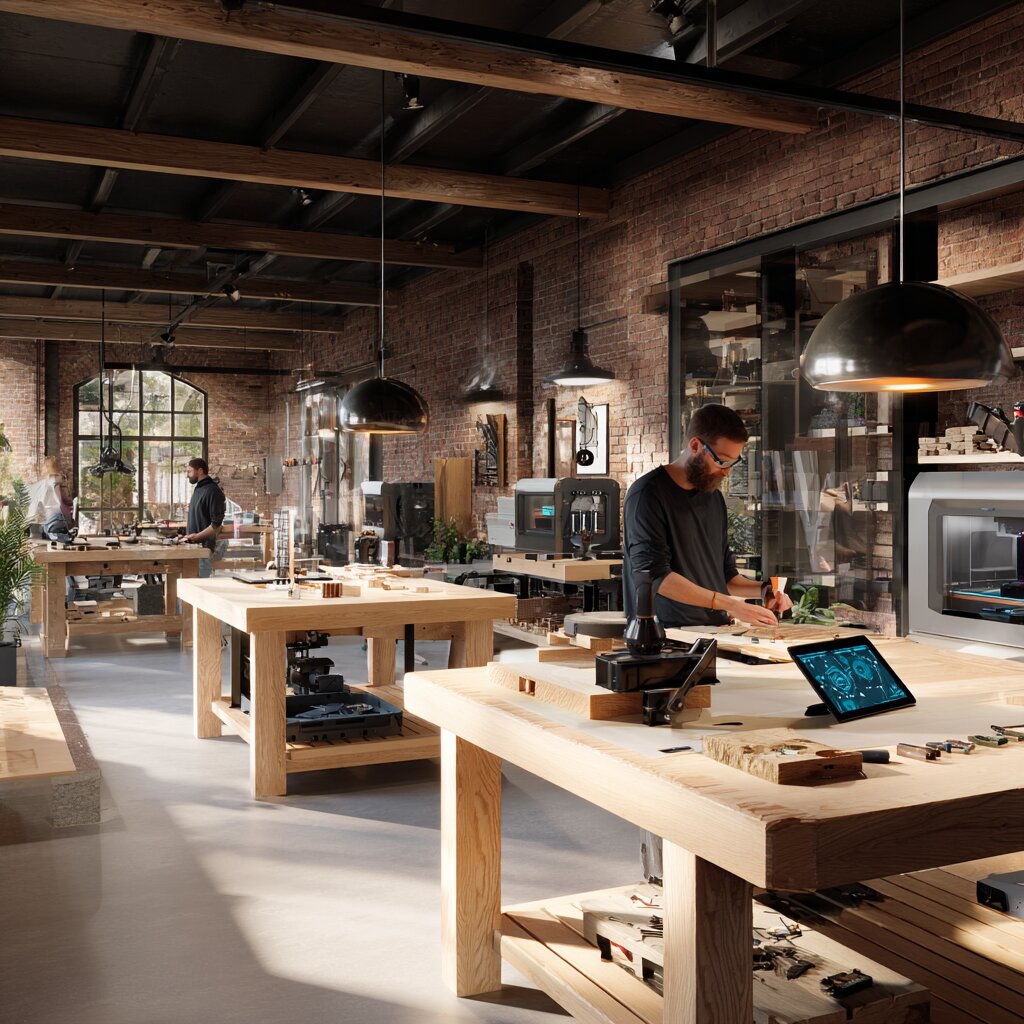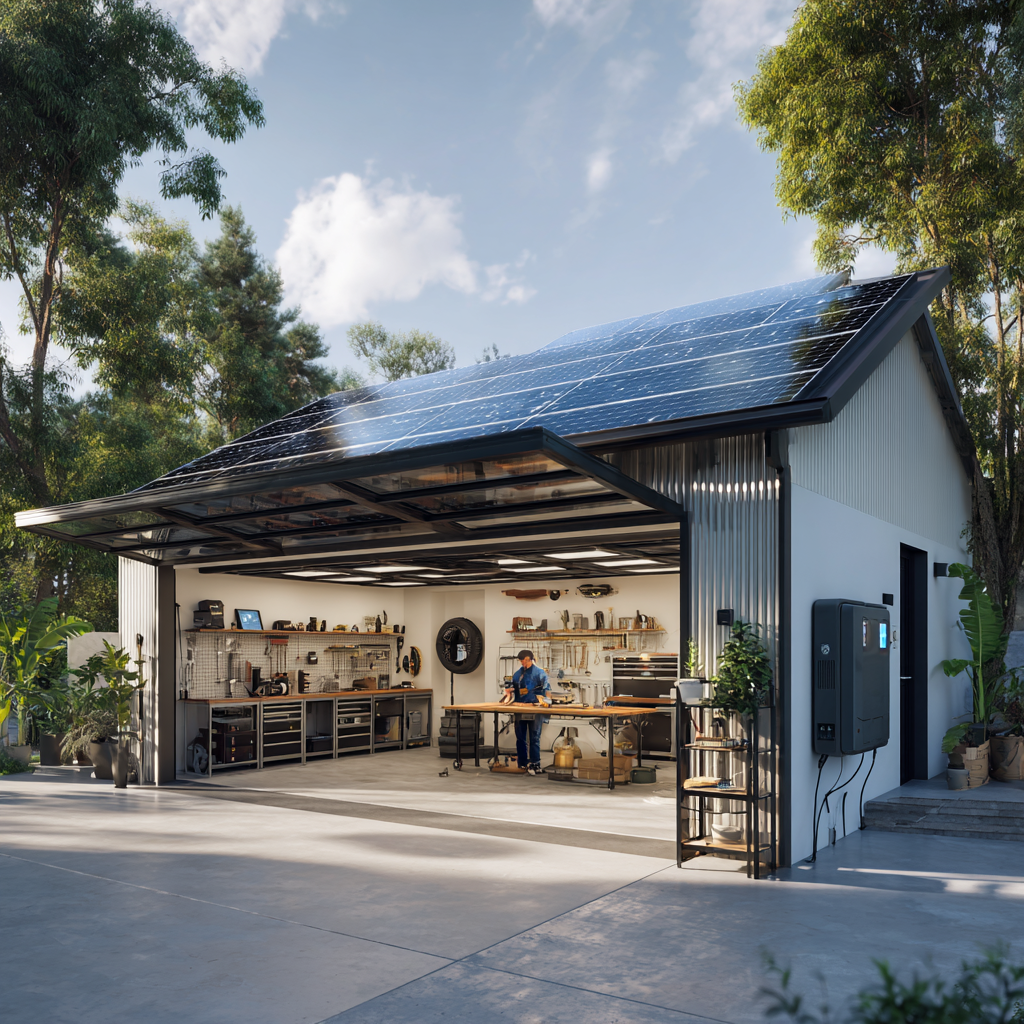Build CNC Mill with Arduino and GRBL 2025
Complete tutorial for building a precision CNC mill using Arduino Uno, GRBL firmware, and affordable components. From design to first cuts.

Transform Your Home Into a Smart Paradise - 2025 Guide
Discover the latest smart home technology that will revolutionize your daily routine.
Building your own CNC mill opens up precision machining capabilities for your workshop. This comprehensive guide covers building a capable machine using Arduino, GRBL, and readily available components.
Why Build Your Own CNC Mill?
Advantages of DIY CNC:
- Cost savings: 50-70% less than commercial equivalents
- Customization: Build for your specific needs
- Learning experience: Understand every component
- Upgrade flexibility: Modify and improve over time
- Precision work: Achieve repeatable accuracy
Project Specifications:
- Working area: 12" x 8" x 4" (300x200x100mm)
- Accuracy: ±0.001" (±0.025mm)
- Materials: Aluminum, wood, plastics
- Control: Arduino Uno + GRBL
- Software: Free CAM solutions
Required Components
Mechanical Parts:
- Linear rails: 20mm supported rails with carriages
- Ball screws: 16mm diameter, 5mm pitch
- Stepper motors: NEMA 23, 3Nm holding torque
- Spindle motor: 800W water-cooled or ER11 collet
- Frame material: 40mm aluminum extrusion
- Couplings: Flexible shaft couplings
Electronics:
- Arduino Uno: Controller board
- CNC shield: Motor driver expansion
- Stepper drivers: DRV8825 or A4988
- Power supply: 24V, 15A switching supply
- Emergency stop: Safety cutoff switch
- Limit switches: Homing and safety
Tools Required:
- Drill press: Accurate hole placement
- Tap set: M5 and M6 threading
- Precision measuring: Calipers, dial indicators
- Assembly tools: Hex keys, wrenches
Mechanical Design and Build
1. Frame Construction
Base assembly:
- Cut aluminum extrusion to precise lengths
- Square frame using precision measuring
- Install T-nuts before final assembly
- Check diagonal measurements for square
Gantry system:
- Mount Y-axis rails to base frame
- Install X-axis gantry with proper alignment
- Add Z-axis vertical column with support
- Verify smooth motion throughout travel
2. Linear Motion System
Rail installation:
- Precision alignment is critical for accuracy
- Use dial indicators for setup
- Pre-load bearings for minimal backlash
- Test motion smoothness before proceeding
Ball screw mounting:
- Proper end bearing support essential
- Minimize shaft deflection
- Align with linear motion axes
- Check for binding throughout travel
3. Spindle Integration
Motor mounting:
- Rigid spindle mount prevents chatter
- Water cooling lines for thermal stability
- Collet system for tool changes
- RPM sensor for speed feedback
Electronics and Wiring
1. Arduino and GRBL Setup
GRBL installation:
1. Download Arduino IDE
2. Install GRBL library
3. Upload firmware to Arduino
4. Configure machine parameters
Key GRBL settings:
- Steps per mm for each axis
- Maximum feed rates
- Acceleration limits
- Homing directions
2. Stepper Motor Configuration
Driver tuning:
- Current limiting for motor protection
- Microstepping settings (1/8 or 1/16)
- Enable/disable timing
- Motor coil connections
Power calculations:
- Motor current requirements
- Driver heat dissipation
- Power supply sizing
- Cooling considerations
3. Safety Systems
Emergency stop circuit:
- Hardwired to motor enables
- Accessible from operator position
- Positive action switch type
- Clear reset indication
Limit switches:
- Normally closed for safety
- Proper mounting for repeatability
- Debounce filtering in software
- Manual override capability
Software Setup and Configuration
1. GRBL Configuration
Machine parameters:
$100=200.000 (X steps/mm)
$101=200.000 (Y steps/mm)
$102=800.000 (Z steps/mm)
$110=2000.000 (X max rate mm/min)
$111=2000.000 (Y max rate mm/min)
$112=500.000 (Z max rate mm/min)
2. CAM Software Options
Free solutions:
- Fusion 360: Personal license available
- FreeCAD: Open source with CAM workbench
- bCNC: G-code sender and simple CAM
- Carbide Create: Free 2D CAM solution
Workflow process:
- Design part in CAD
- Generate toolpaths in CAM
- Post-process to G-code
- Send to machine controller
3. Machine Control Software
Recommended options:
- Universal G-Code Sender: Java-based, cross-platform
- bCNC: Python-based with advanced features
- Candle: Qt-based with 3D visualization
- OpenBuilds CONTROL: User-friendly interface
First Test Cuts and Calibration
1. Machine Calibration
Steps per mm verification:
- Cut test pieces with known dimensions
- Measure actual vs. programmed distances
- Adjust GRBL parameters accordingly
- Repeat until accuracy achieved
Backlash compensation:
- Test direction changes
- Measure positioning errors
- Adjust mechanical preload
- Software compensation if needed
2. Spindle Calibration
Speed verification:
- Use tachometer or strobe light
- Create RPM vs. command curve
- Adjust spindle controller settings
- Document actual speeds achieved
3. First Parts
Recommended first projects:
- Simple engraving in soft material
- 2D profile cuts in wood or plastic
- Drilling patterns for accuracy test
- 3D relief carving for capability test
Precision Improvements
1. Mechanical Upgrades
Vibration reduction:
- Machine mounting and isolation
- Spindle balancing and alignment
- Frame reinforcement where needed
- Dampening materials application
Accuracy enhancements:
- Better quality linear bearings
- Precision ground ball screws
- Servo motors for closed loop
- Linear encoders for feedback
2. Software Optimizations
Feed rate optimization:
- Acceleration tuning for smoothness
- Jerk control for surface finish
- Spindle speed synchronization
- Tool change automation
Maintenance and Troubleshooting
Regular Maintenance
Weekly checks:
- Clean chips and debris
- Check lubrication levels
- Verify belt tensions
- Inspect electrical connections
Monthly maintenance:
- Calibrate machine accuracy
- Update software as needed
- Check bearing condition
- Service spindle cooling system
Common Issues
Accuracy problems:
- Check mechanical looseness
- Verify steps per mm settings
- Inspect for wear in components
- Temperature compensation needs
Surface finish issues:
- Spindle runout or imbalance
- Incorrect feeds and speeds
- Tool condition and selection
- Machine rigidity problems
Safety Considerations
Operational Safety
- Always wear safety glasses
- Secure workpieces properly
- Keep hands away from moving parts
- Use appropriate cutting fluids
Electrical Safety
- Proper grounding essential
- Emergency stop always accessible
- Regular wiring inspections
- Professional electrical review
Project Costs and Timeline
Budget Breakdown:
- Mechanical components: $800-1200
- Electronics: $200-300
- Spindle and tooling: $300-500
- Miscellaneous: $100-200
- Total project cost: $1400-2200
Build Timeline:
- Design and planning: 2-3 weeks
- Parts procurement: 1-2 weeks
- Mechanical assembly: 3-4 weeks
- Electronics integration: 1-2 weeks
- Testing and calibration: 2-3 weeks
- Total project time: 9-14 weeks
Conclusion
Building your own CNC mill is challenging but extremely rewarding. The combination of mechanical precision, electronics integration, and software configuration provides excellent learning opportunities.
Start with a solid mechanical foundation, take time with alignment and calibration, and gradually increase complexity as you gain experience. The result will be a capable machine tool that opens up new possibilities for your workshop projects.
Remember that CNC machining is both art and science - expect a learning curve but enjoy the journey toward precision manufacturing capability!
Smart Home Upgrade Package 2025
Transform your home with the latest smart technology
Transform Your Home Into a Smart Paradise - 2025 Guide
Discover the latest smart home technology that will revolutionize your daily routine.

